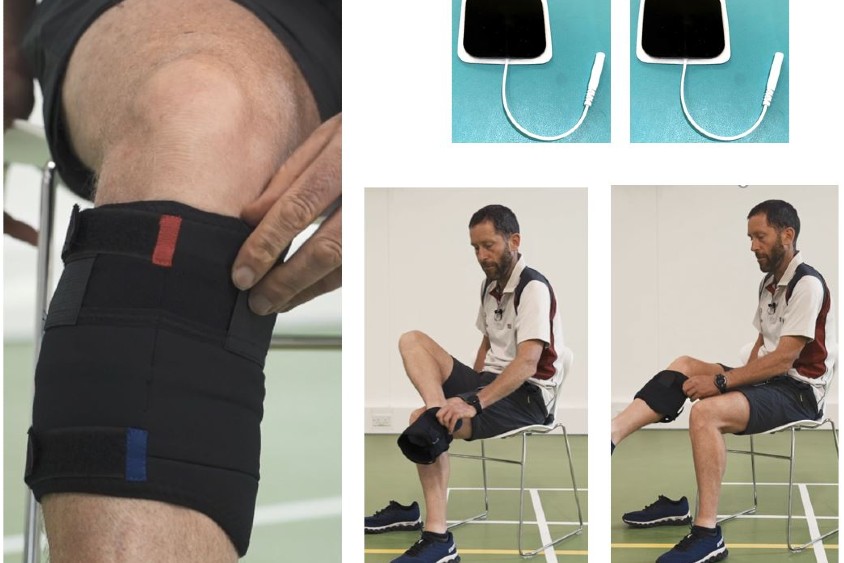The OML device is most often wore at the waist on a belt clip or held within a trouser pocket with wires leading to sticky electrodes attached below the knee. While this works for many thousands of users, some users prefer to wear the device at the knee and not have to search for the best position for the electrodes.
Etexsense manufacture novel, non-adhesive, textile electrodes which are suitable for this application. Funding from the AWRC Wellbeing accelerator supported Design Futures (part of Sheffield Hallam University) to develop a novel cuff to hold the stimulator and locate the Extesense electrodes at the knee. The electrodes are semi-permanently attached to the cuff using Velcro for simple adjustment. Electrode positions are individually chosen for each user to generate the best foot response.
The AWRC then tested the device with 7 users without neurological disease. Results showed that the device lifted the foot as well as conventional electrodes, had similar sensation, and was simple to put on and take off, even using only one hand.
This research has led to further grant funding to test the new system with patients with neurological disease during walking.
This project was undertaken as part of the AWRC Wellbeing Accelerator (Programme 1)

